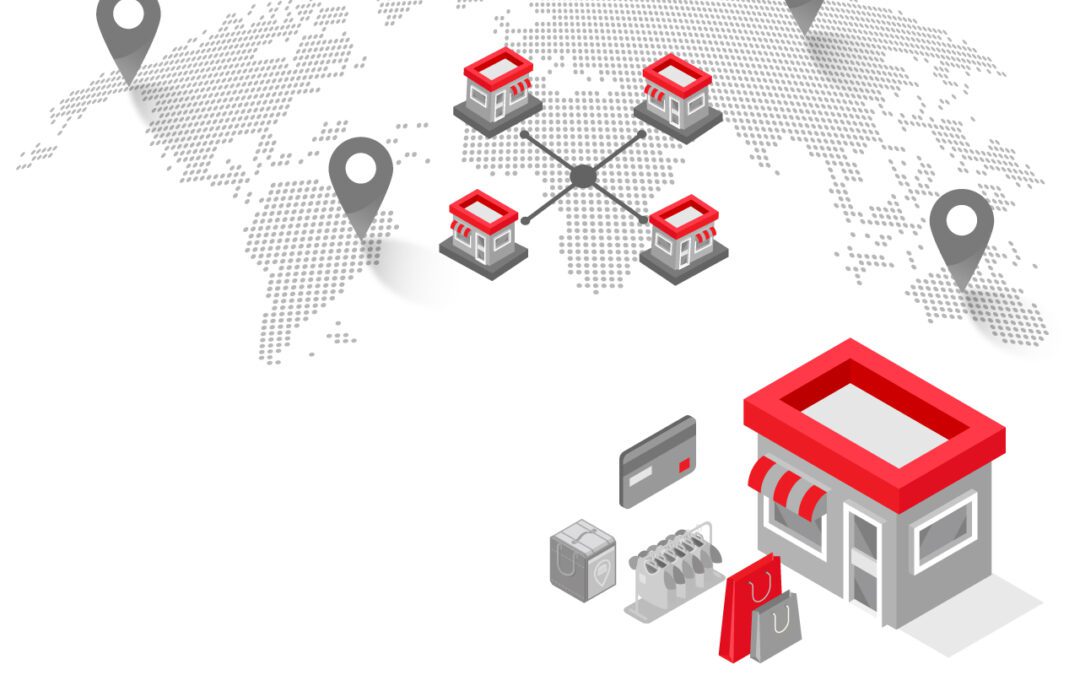When we think of retail growth and expansion, we are tempted to jump to the marketing side of it. We think of the many organic and inorganic growth strategies. However, growth and expansion are also dependent on your current operational standing. If you are struggling with your existing state of operations, do you think you will be able to manage an expanded version of it? As retail and eCommerce consultants, we have worked with numerous clients in their business growth and expansion projects. None with a poor operational framework ever made it successfully. Even if you add 10 more stores, you will have to make the corrections then too. So, it is better that you correct your operations when they are at a manageable scale.
With high levels of operational efficiency and effectiveness, your retail store gets good at what it does. For example, if you could resolve 100 customer complaints over a given period, you could do the same for 1000 customers with the same process. You may need more employees and automation solutions but that is a different matter. Here, we are talking about enhancing the planned operational capabilities of your retail store to handle more business and customers with high precision. This will also help you redirect resources. As for business owners, their involvement in routine operational affairs significantly reduces with robust operations management.
Going ahead in this blog, we shall see how retail stores can excel with their operations and use improved operations as a platform for business growth and expansion.
Create Departments
One of the essential management principles that retail stores must implement is the functional division of their operations. It helps achieve two objectives – better organisation and specialised focus. Various functions or operations of retail stores include purchase and inventory management, cash and accounts, logistics and delivery, sales and merchandising, customer support, marketing and business development, logistics, HR, finance, etc.
Does it apply to all retail stores? What if it is a small business? Organisational design and structuring are fundamental requirements and apply to all businesses irrespective of their size and scale. Even if the business is small, these aforementioned operations must be carried out. In small teams, there may be overlapping of duties and responsibilities. Ideally, each department has a team of its own headed by a manager or a team leader. In a small business, it could even be a one-member team.
The creation of departments and functional divisions helps retail stores become organised. Tomorrow, if they add new stores or there is an increase in business volume, it remains easier for them to enhance their operational capabilities in a balanced manner.
Develop Processes
Every department in a retail store has certain functionalities. For example, the sales & merchandising team has to ensure that stocks are placed on the right shelves as per the visual strategies. Every time new stock arrives, this activity has to be carried out. Within the team, someone has to be assigned this task. This entire task can be classified as a process or operation with a defined workflow and other operational standards to be maintained using SOPs (Standard Operating Procedures). This principle can then be applied to all the processes of all the departments. Interdepartmental coordination involved could get covered with the help of SOPs. The goal is to become process-oriented. But it is important to ensure strict adherence to the established processes and SOPs.
Once process maturity is attained, the same processes could be replicated with higher confidence in new stores. Minor improvisations may be required but the foundation would already be there.
Go for Automation and Digitisation
When we say automation and digitisation in retail, we are referring to software, mechanical, and industrial solutions (and features) for retail businesses. This could include shopping website/app, ERP, analytics, IoT and SMART technologies, robotics, digital payment, cashless checkout, AR/VR, scanners, order tracking, etc. Certain technologies have become commonplace. How a retail store chooses to adopt technology will depend on its business requirements. For instance, a retail store that adopts omnichannel also goes for developing a shopping website/app for its customers. But for any global retail brand, these technologies are a bare minimum. For them, solutions like cashless checkout or the use of AR/VR are the next big things.
As retail consultants, we always maintain that the adoption of technology has big implications for the abilities of retail stores to strive for growth and expansion. For instance, by simply digital payment options, retail stores can reduce their cash-handling activities. Even if it saves them one hour a day, it adds up to more than 240 hours in a year. The resources that get invested here could be redirected to other purposes like business development or market research or customer acquisition.
Build a strong Middle-level Management
When we say middle-level management, it can also be just one store manager. If it is a bigger store, it could mean the departmental heads spearheading different functions. These are very vital positions when it comes to the operational abilities of a retail store. These are the people who see to it that the respective departments/functions under their control are operating as required. Business owners also need these managers so that they would not have to be involved in routine affairs. With the confidence to entrust the operations, business owners get the much-needed time and space to focus on the bigger business goals of growth and expansion.
Hire Professionally, provide Training
Many retailers do not take up their HR activities as they should. There is no defined size and scale of business to conduct HR activities professionally. The organisation’s strength is immaterial here. Even if you intend to hire only 5 employees, there is no reason why you should not be applying the best hiring practices. The same goes for training. Do not leave new employees to get trained by existing employees in an undefined and unplanned manner. It is good neither for skill development nor for the work culture. And productive employees stick to productive work environments. Your business cannot strive for growth and development if you do not have a stable and productive team backing you up.
Corrective PMS
To achieve the benefits of PMS, retailers must also act on the performance reports. You may have an elaborate PMS in place but you can reap its benefits only if you use the insights gained to improve performance. Also, the PMS should be designed keeping in consideration the ground realities. For example, if there are growing instances of uninformed leaves among your employees, you may have to interfere for good or invoke your store or HR manager to work in that area.
About Your Retail Coach (YRC)
YRC is a 10-year-old retail and eCommerce consulting brand with the experience of having worked with 500+ clients in 25+ verticals. As an enterprise with a growing international presence, we endeavour to sustain world-class service standards. We engage professional and experienced retail operations consultants in service design and delivery.
For more information on our retail operations consulting services or to speak to one of our retail and eCommerce consultants, please drop us a message.











